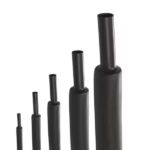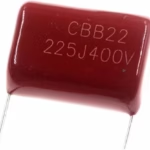Back to products


Heat Shrink Tube 1Meter
₨ 20.00 – ₨ 70.00Price range: ₨ 20.00 through ₨ 70.00
4S 14.8V – 16.8V 20A peak li-ion BMS
SKU:
1509
₨ 300.00
In stock
In stock
16
People watching this product now!
Description
4S 14.8V – 16.8V 20A peak Li-ion Battery Management System (BMS) is commonly used in lithium-ion battery packs configured in a 4-cell series arrangement. This type of BMS is designed to protect and manage the charging and discharging processes of a Li-ion battery pack to ensure safe operation. Here are the typical specifications for such a BMS:
General Specifications:
- Battery Configuration: 4S (4 cells in series)
- Nominal Voltage: 14.8V (3.7V per cell nominal)
- Full Charge Voltage: 16.8V (4.2V per cell)
- Cut-off Voltage (Discharge): Typically around 10.0V to 12.0V (2.5V to 3.0V per cell, depending on the design)
- Peak Current: 20A (can handle brief peak currents during high load conditions, such as during motor startup or other transient situations)
- Continuous Discharge Current: Typically 10A to 15A (depends on the BMS design)
- Charging Current: Typically 5A to 10A (varies based on specific BMS model)
- Voltage Range: 14.8V to 16.8V (nominal to full charge)
Protection Features:
- Overvoltage Protection (OVP): Protects each cell from exceeding a voltage of around 4.2V (or 16.8V for the entire pack)
- Undervoltage Protection (UVP): Prevents deep discharge of cells, typically below 3.0V per cell (12.0V for the whole pack)
- Overcurrent Protection (OCP): Limits the current to prevent damage to the cells or circuitry, typically around 20A peak and 10-15A continuous (varies by BMS)
- Short-Circuit Protection: Detects short circuits and disconnects the load to prevent damage
- Overtemperature Protection: Monitors the temperature of the battery and disables the system if the temperature exceeds a safe threshold, usually around 60°C to 70°C
- Overcharge Protection: Prevents the pack from being charged beyond the safe voltage level (typically 4.2V per cell, 16.8V total)
- Overdischarge Protection: Disconnects the load if the voltage drops too low to prevent cell damage
Cell Balancing:
- Cell Balancing: Passive or active cell balancing is often implemented to ensure all cells in the series configuration maintain the same voltage level during charging, improving overall battery lifespan and performance.
- Passive Balancing: Discharges higher-voltage cells to balance them with lower-voltage ones.
- Active Balancing: Transfers energy from higher-voltage cells to lower-voltage cells, which is more efficient but more expensive.
Communication:
- Voltage Monitoring: Continuously monitors the voltage of each cell in the pack.
- Temperature Sensors: Typically includes one or more thermistors to monitor the temperature of the cells or BMS.
- Communication Interface: Some BMS units include communication protocols (e.g., I2C, SMBus, RS485, or CAN bus) for external monitoring and control.
Physical Characteristics:
- Dimensions: Compact design for fitting into typical battery pack configurations, often in the range of 50-100mm x 50-100mm.
- Operating Temperature Range: Usually between -20°C and 60°C or 70°C, depending on the BMS and its protection features.
- Weight: Typically between 30-70 grams, depending on the features and capacity.
Additional Features:
- LED Indicators or Display: Some BMS systems have LED indicators or LCD displays to show the current state of charge or alert users of errors such as overvoltage, undervoltage, or thermal issues.
- Self-Protection Circuitry: Includes fuses or MOSFETs for high current protection and to prevent failure during extreme conditions.
Applications:
- Electric Vehicles (EVs): E-bikes, scooters, etc.
- Power Tools
- Energy Storage Systems (ESS)
- Solar Power Systems
- RC Hobby Applications: Drones, robots, etc.
- Portable Power Packs for camping, electronics, etc.




